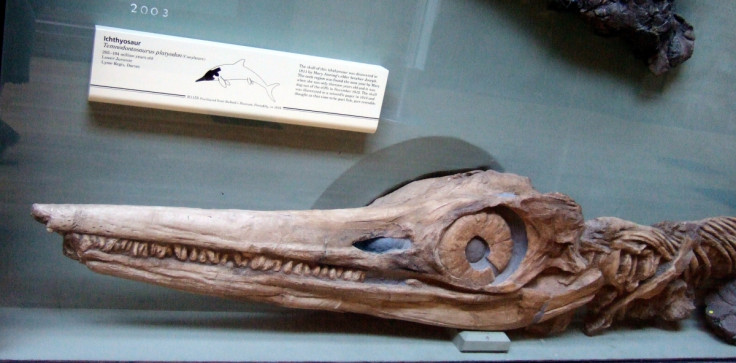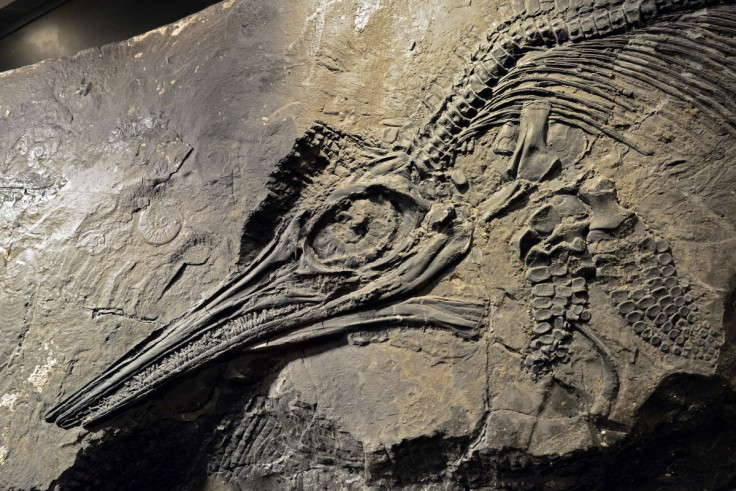Ichthyosaurs: Climate change and slow evolution pushed 'sea dragon' to extinction 90 million years ago

A combination of climate change and slow evolution pushed ichthyosaurs to extinction 90 million years ago, scientists have said. The discovery solves a long-standing mystery about why these ancient marine reptiles - sometimes called 'sea dragons' - disappeared 30 million years before the majority of the other dinosaurs.
"Scientists have been investigating this extinction for some time now," Valentin Fischer, co-author of the research told IBTimes UK. "About 30 to 40 years, although sporadically." The study, published in Nature Communications, is the first to show how and why ichthyosaurs disappeared.
"We analysed the extinction of this crucial marine group thoroughly for the first time," said Fischer. "We compared the diversity of ichthyosaurs with the geological record of global change, emphasising the dynamics of these datasets."

Recreating 120 million years of icthyosaur existence
The study managed to reconstruct the ichthyosaurs' evolution for the last 120 million years of their existence. They used genetic data from 88 individuals from literature and museum remains. They then created a model of their existence, based on their characteristics and the changing environment around them, including food sources and air temperature.
Their results showed that before their extinction, the species had a large biodiversity. The researchers noted a broad range of different body sizes, as well as numerous different parts of the world the ichthyosaurs lived.
Two-stage extinction
However, a two-stage extinction event caused the end of the ichthyosaur. First, the majority of ichthyosaurs died out at the beginning of the Cenomanian – around 93 million years ago.
The researchers say this was linked to "being highly diverse but slowly evolving". After this mass decline in population, the species had a low biodiversity and were relatively low in numbers.

They say that ichthyosaurs were finished off 90 million years ago, when numerous climatic and oceanic changes occurred. These changes include high sea level, very high temperatures, depleted polar ice, and a big absence of oxygen in the atmosphere.
Fischer said: "Although the rising temperatures and sea levels evidenced in rock records throughout the world may not directly have affected ichthyosaurs, related factors such as changes in food availability, migratory routes, competitors and birthing places are all potential drivers; probably occurring in conjunction to drive ichthyosaurs to extinction."
He told IBTimes UK they now plan to investigate this event, which took place at the beginning of the Late Cretaceous, to find exactly how what happened: "The extinction of ichthyosaurs appears to be just a facet of that profound faunal turnover. We'd like to know what happened precisely to the other groups in relation to these profound environmental changes. We have projects (in evaluation for funding) on fishes, other marine reptiles and coral reefs of that time period."
Despite Ichthyosaurs becoming extinct millions of years ago, scientists have still managed to obtain a lot of information about it. For example, it is believed the Ichthyosaurs had the largest eyeballs of any species ever.
© Copyright IBTimes 2025. All rights reserved.





















